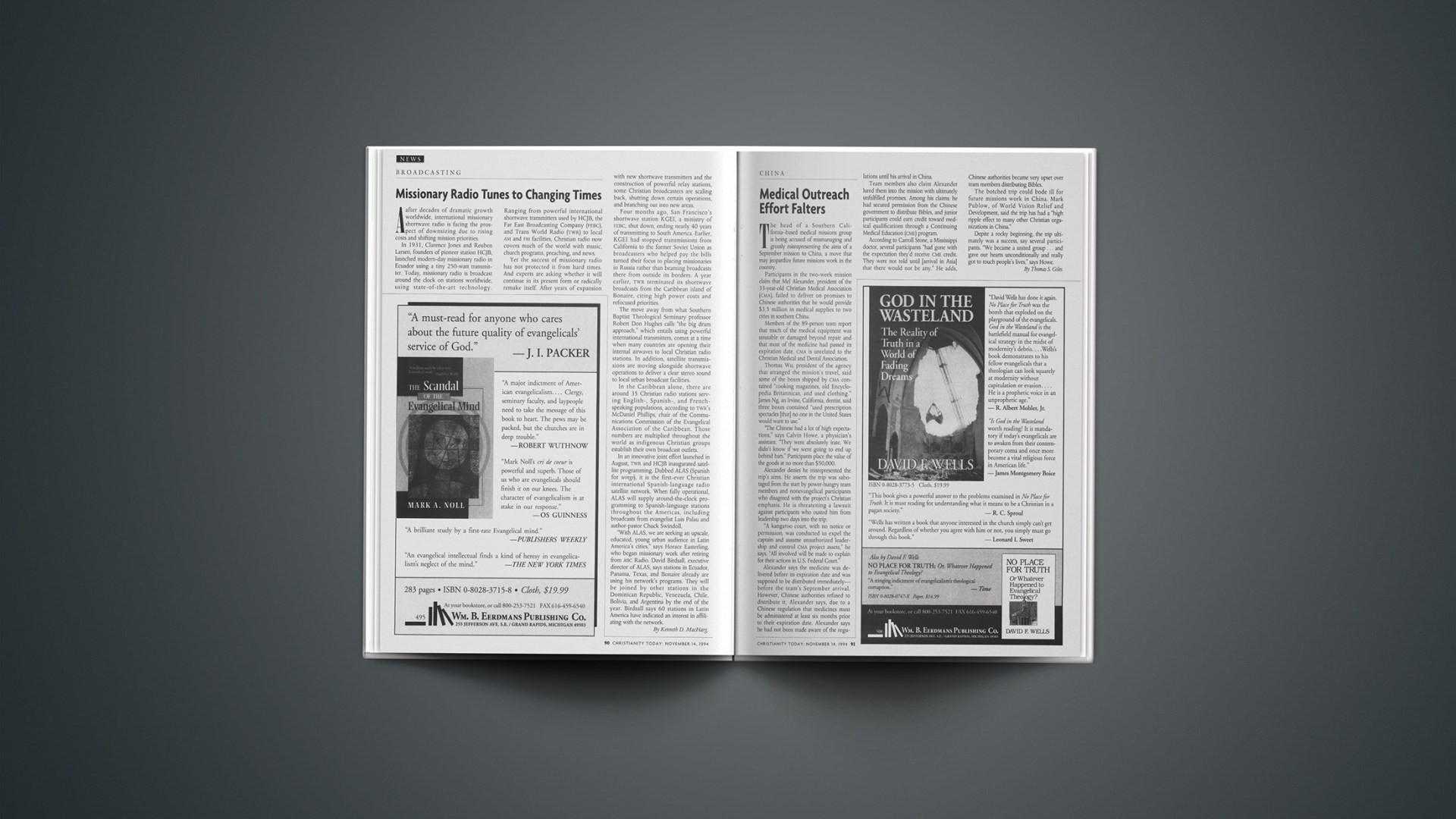After decades of dramatic growth worldwide, international missionary shortwave radio is facing the prospect of downsizing due to rising costs and shifting mission priorities.
In 1931, Clarence Jones and Reuben Larsen, founders of pioneer station HCJB, launched modern-day missionary radio in Ecuador using a tiny 250-watt transmitter. Today, missionary radio is broadcast around the clock on stations worldwide, using state-of-the-art technology. Ranging from powerful international shortwave transmitters used by HCJB, the Far East Broadcasting Company (FEBC), and Trans World Radio (TWR) to local am and fm facilities, Christian radio now covers much of the world with music, church programs, preaching, and news.
Yet the success of missionary radio has not protected it from hard times. And experts are asking whether it will continue in its present form or radically remake itself. After years of expansion with new shortwave transmitters and the construction of powerful relay stations, some Christian broadcasters are scaling back, shutting down certain operations, and branching out into new areas.
Four months ago, San Francisco's shortwave station KGEI, a ministry of FEBC, shut down, ending nearly 40 years of transmitting to South America. Earlier, KGEI had stopped transmissions from California to the former Soviet Union as broadcasters who helped pay the bills turned their focus to placing missionaries in Russia rather than beaming broadcasts there from outside its borders. A year earlier, TWR terminated its shortwave broadcasts from the Caribbean island of Bonaire, citing high power costs and refocused priorities.
The move away from what Southern Baptist Theological Seminary professor Robert Don Hughes calls "the big drum approach," which entails using powerful international transmitters, comes at a time when many countries are opening their internal airwaves to local Christian radio stations. In addition, satellite transmissions are moving alongside shortwave operations to deliver a clear stereo sound to local urban broadcast facilities.
In the Caribbean alone, there are around 35 Christian radio stations serving English-, Spanish-, and French-speaking populations, according to TWR's McDaniel Phillips, chair of the Communications Commission of the Evangelical Association of the Caribbean. Those numbers are multiplied throughout the world as indigenous Christian groups establish their own broadcast outlets.
In an innovative joint effort launched in August, TWR and HCJB inaugurated satellite programming. Dubbed ALAS (Spanish for wings), it is the first-ever Christian international Spanish-language radio satellite network. When fully operational, ALAS will supply around-the-clock programming to Spanish-language stations throughout the Americas, including broadcasts from evangelist Luis Palau and author-pastor Chuck Swindoll.
"With ALAS, we are seeking an upscale, educated, young urban audience in Latin America's cities," says Horace Easterling, who began missionary work after retiring from ABC Radio. David Birdsall, executive director of ALAS, says stations in Ecuador, Panama, Texas, and Bonaire already are using his network's programs. They will be joined by other stations in the Dominican Republic, Venezuela, Chile, Bolivia, and Argentina by the end of the year. Birdsall says 60 stations in Latin America have indicated an interest in affiliating with the network.
Copyright © 1994 Christianity Today. Click for reprint information.










